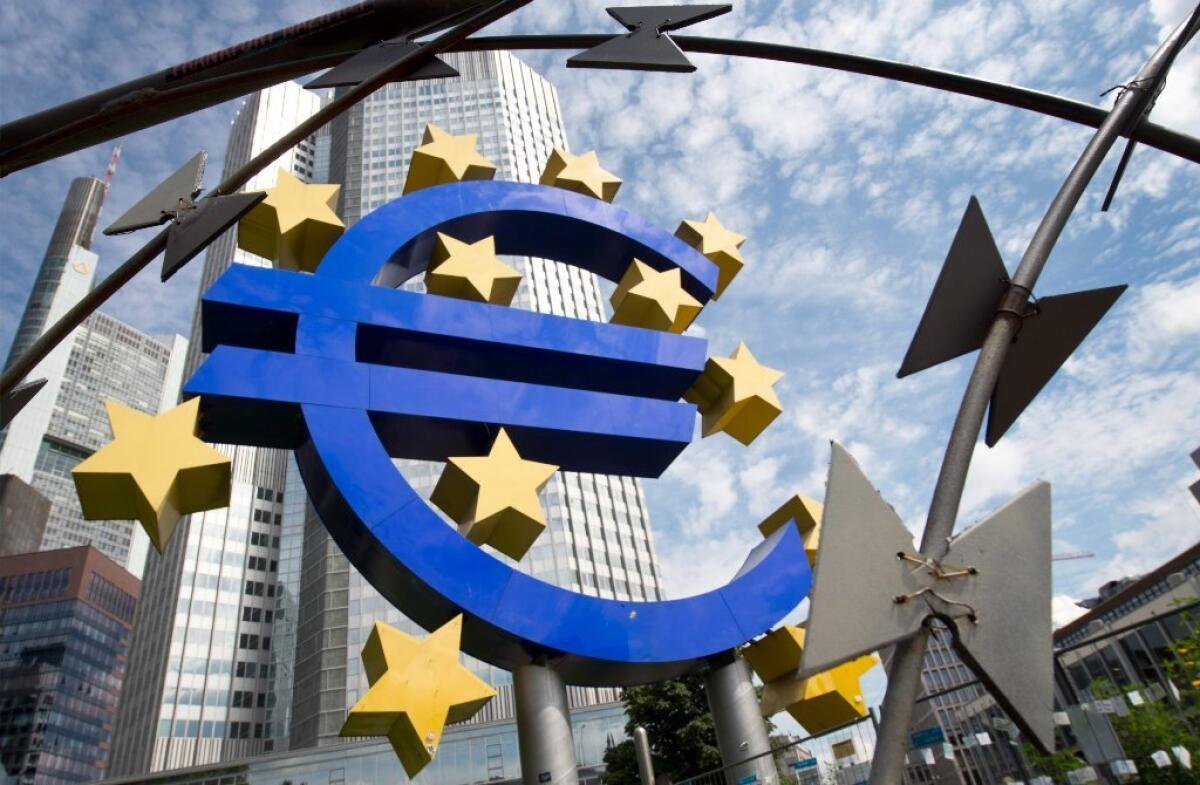Weakness in Eurozone, Asia pose risks to U.S. economy

Troubles in the global economy have dogged the American economy since early in the recovery, with the Eurozone debt crisis, the so-called Arab Spring in the Middle East and the Japanese tsunami all swiping momentum from U.S. growth in varying degrees.
Now warning signs are flashing again.
The economy in the 18-nation Eurozone has been limping along since its sovereign debt crisis threatened to break up the currency area. On Thursday, officials reported that its feeble recovery came to an outright halt in the second quarter. The economies of powerhouse Germany and Italy both contracted, while the bloc’s second-largest economy, France, stagnated.
The euro area’s weaker-than-expected performance was announced a day after Japan, the world’s third-biggest economy, reported that economic output fell 1.7% in the second quarter from the prior three months, a drop of 6.8% at an annual rate.
Moreover, China’s economy is showing signs of slowing at the start of the third quarter. Its pace of retail sales, investments, industrial production and new lending all softened in July compared with the previous month.
All in all, the latest batch of disappointing news from East to West reinforces the view that global growth will be sluggish this year, and it increases the risk that economic problems overseas could weigh on the U.S. recovery.
Foreign trade is expected to be a drag on U.S. growth — and things could get worse if geopolitical tensions in Ukraine and the Middle East deepen.
At best, it looks as if the American economy will have to go it alone.
“The message is clear: The global economy will see very little acceleration this year,” Sara Johnson, senior research director of global economics at research and consulting firm IHS Inc., said about this week’s dour economic reports.
Earlier this year, Johnson was forecasting world growth of more than 3% for this year but has since marked that down to 2.8%.
“I expect growth will disappoint; nevertheless we’ll stay out of recession,” she said, noting that for the global economy, anything less than 2% growth is considered a recession.
Despite the Eurozone’s grim second quarter, analysts aren’t worried about another debt crisis. Besides assurances from the European Central Bank, structural economic reforms have helped.
Recession-battered Spain and the Netherlands have turned the corner, while the economies of Greece and Cyprus, flash points of the crisis, appear to have hit bottom, said Jacob Kirkegaard, a senior fellow at the Peterson Institute for International Economics in Washington.
Among the Eurozone’s biggest economies, few analysts are worried about Germany. Its second-quarter contraction of 0.2% from the prior quarter was partly weather-related: A mild winter boosted construction and other activity in the first three months, stealing economic output from the spring quarter. That was the reverse of what happened in the U.S. with its severe winter curtailing growth.
It’s a different story for France and Italy. Prospects for the Eurozone’s second- and third-largest economies have dimmed as leaders of both countries have failed to make fundamental changes in labor and other structural weaknesses.
“Although a renewed flare-up of the euro-area crisis is not in the cards, Europe is going to be growing very slowly for the foreseeable future,” Kirkegaard said.
Moreover, the fighting in Ukraine, which has prompted EU sanctions against Russia and counter-sanctions by Moscow, has exacerbated fears of deflation — a debilitating condition of falling prices and wages.
Inflation in the Eurozone was just 0.4% in July, and some analysts worry that Russia’s restrictions of EU imports could lead to an oversupply of food products, which could further tamp down domestic prices.
The Japanese economy also is expected to grow again in the third quarter from the sharp contraction caused by the government’s sales tax hike on April 1, but analysts see only a modest rebound. Japan, like the Eurozone, will be lucky to eke out 1% growth for this year, they said.
The Chinese economy is expected to expand about 7.5% this year, but prospects have been clouded by a housing-market correction and problems of over-capacity in steel and other basic industries.
Nor is the U.S. economy likely to get much help from other developing economies such as Brazil, where growth generally has moderated. “We’re not going to get the same juice from the emerging markets,” said Mark Zandi, chief economist at Moody’s Analytics.
With global growth sluggish, the American economy is again the main locomotive for the world economy. The recovery stalled early this year, contributing to the global slowdown, but rebounded sharply in the second quarter.
Economists are hoping that the recovery, now in its sixth year, will maintain a higher rate of growth of about 3% in the coming quarters.
But as Stanley Fischer, the Federal Reserve’s vice chairman, noted in a speech this week, global head winds in the past have hurt exports and corporate earnings, depressed stock prices at times and weighed on business and household financial decisions.
“Year after year,” he said, “we have had to explain from midyear on why the global growth rate has been lower than predicted as little as two quarters back.”
More to Read
Inside the business of entertainment
The Wide Shot brings you news, analysis and insights on everything from streaming wars to production — and what it all means for the future.
You may occasionally receive promotional content from the Los Angeles Times.











